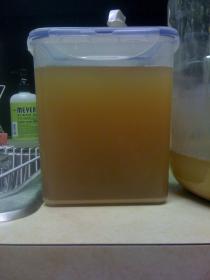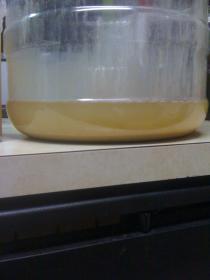TANSTAAFB
Well-Known Member
I was hoping immediately.
My original intent was to brew the next batch and at the same time, have everything ready to bottle. When the batch went out to chill with the chiller outside, I was going to rack and bottle, then pitch onto the cake as soon as it was chilled and aerated. The LHBS guy said I could pick right onto the cake, but everything I'm reading here says that's overpitching and while it may work, I'd more than likely get better beer by pitching a portion of the slurry.
I looked at Mr. Malty yesterday and got this information:
I started a thread about the slurry, but wasn't getting much action on it, so I'm trying other resources to get a solid answer
https://www.homebrewtalk.com/f163/pitching-slurry-229871/
If the non-yeast % is at 25%, I get numbers ranging from 64, 83, and 127 ml of slurry based on 2, 3, and 4 billion cells per milliliter of slurry. I have no idea how concentrated the yeast are or the non-yeast % and those numbers are about double each other from one end to the other.
I didn't want to save any of it. If I'm going to have to go through the process of washing it, I might as well save some for the next Belgian I do, but at this point, I just want to get the next batch going.
I called my folks and they have pint and quart-sized mason jars and lids and mom is boiling some for me now.
This is the first time I'm brewing a style similar or using the same yeast as a batch I've previously brewed. I just got started in late October. I haven't even tasted the first Belgian I brewed yet. This is going to be a different malt, hop, and spice profile, but still uses WLP400.
Can I wash enough yeast today, cold crash it for 18 hours or so, let it warm up tomorrow morning, decant the liquid, and pitch without using a starter?
The info I gave was to use immediately, washing was just a suggestion. If it seems like too much trouble, skip it! I like the savings from washing and find it an easy process.
You don't need a starter to use slurry. The assumption of 25% trub that Mr. Malty defaults too is the best guesstimate and probably pretty accurate. Just leave the defaults, put in your batch size and OG #'s, and maybe bump the ml by 20-25% just to be safe. You can skip the whole tupperware container part and just put the slurry in a sanitized pyrex measuring cup (or mason jar) and cover with sanitized foil. Leave out at room temp, don'y refrigerate. Pitch directly to wort when ready.





















































![Craft A Brew - Safale S-04 Dry Yeast - Fermentis - English Ale Dry Yeast - For English and American Ales and Hard Apple Ciders - Ingredients for Home Brewing - Beer Making Supplies - [1 Pack]](https://m.media-amazon.com/images/I/41fVGNh6JfL._SL500_.jpg)








